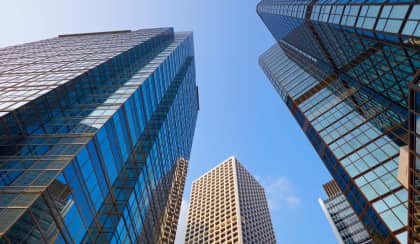Minimising the biggest risk for commercial property owners
A lawyer has flagged the biggest risk for commercial landlords – and how agents, property managers and landlords can combat it.

In a new report from CreditorWatch titled Navigating the Stormy Seas of the Commercial Property Market, businessDEPOT special counsel Brendan McGrath acknowledged there are a number of risks “inherent” in the business of being a commercial landlord.
But, he did flag that “perhaps the most concerning is the risk of insolvency of a tenant”.
“Where a tenant becomes insolvent, the flow-on effects can be significant,” he advised.
Some of those flow-on effects include: loss of rental income; costs associated with make good, marketing and re-letting the premises; and unfunded outgoing commitments, such as mortgage payments, rates and taxes, and insurances.
In some cases, a tenant’s insolvency can even lead to a decrease in property value, and have an impact on foot traffic within a centre.
Mr McGrath was quick to note that the reasons for a tenant becoming insolvent is “often beyond the control of landlords”.
But he pointed out a number of practical steps that can be taken to minimise insolvency impacts on a commercial landlord.
- Screen carefully
“It is always good practice to conduct thorough background and credit checks on prospective tenants to assess their financial stability,” Mr McGrath stated.
While this doesn’t always guarantee success, the lawyer noted that tenants “with proven experience in the business or industry related to their intended operations may offer a lower risk of insolvency”.
In addition, successful tenants can boost a landlord’s positive reputation, “thereby helping to attract future tenants and to hopefully increase property values”.
- Get the lease right
Calling it “one of the biggest mistakes that landlords make”, Mr McGrath stressed that a bad clause from the beginning can have a long-lasting detrimental impact.
“For that reason, landlords should ensure that leases contain clauses that contemplate what happens in the event of an insolvency, such as terms dealing with termination rights, access and retention of property,” he explained.
- Put security guarantees in place
Not only providing landlords a financial cushion when tenants fail to meet financial obligations, Mr McGrath said that oftentimes, tenants who know their security deposit is at stake will be more incentivised “to comply with the terms of the lease, including paying rent on time and taking good care of the property”.
Furthermore, the lawyer added: “It is always a good option, where possible, to obtain personal guarantees from directors and shareholders of a corporate tenant, particularly where the tenant entity has been established for the sole purpose of holding the lease.”
- Diversify your tenants
Healthy competition can be a good idea, but too much competition can mean tenants will struggle to maintain market share, and ultimately, profitability.
According to Mr McGrath: “Having a diverse group of tenants from different industries can reduce the impact of a single tenant’s insolvency on the overall performance of a landlord’s portfolio.”
- Be aware of third-party interests
A “commonly overlooked” aspect of the leasing process, Mr McGrath warned that many landlords are not considering third-party interests when determining tenant suitability.
“Chief among these third parties are banks/lenders and franchisors; both of which can exert substantial power and control over the operations of a tenant. When a tenant’s operations are financed, the lender often has specific requirements and conditions that must be met by the tenant,” he outlined.
The legal counsel explained that oftentimes, “these conditions can affect the terms of the lease and may include provisions related to the lender taking control of the tenant’s operations in the event of an insolvency, typically through the appointment of an administrator”.
When this happens, without an express right on the part of the landlord to terminate the lease, the premises “can sit in a state of operational paralysis, whereby the landlord has to deal with both a loss of income and the inability to remove the tenant,” Mr McGrath warned.
This also comes into play for franchises, where franchisors can control a number of financial aspects of a tenant’s business, “particularly in respect of pricing, marketing and changes to fitout, signage and operational equipment, to maintain brand consistency”.
Sounding the alarm to commercial investors and landlords, the special counsel pointed out that the high costs which can be imposed by franchisors in this respect, as well as the level of control they often exert over tenants can drastically impact tenant viability.
Low risk remains
In saying this, CreditorWatch chief economist Anneke Thompson has stated the Australian commercial property sector “is arguably one of the lowest risk” in the world for investors.
That’s despite “serious economic headwinds and heightened risk in the commercial property sector across the globe”.
She outlined how “very strong population growth and recovering business confidence continue to support underlying demand in the commercial property sector, albeit at lower levels than in pre-COVID times, in key areas like office”.
In addition, “overall company profits are also in remarkably good shape, with businesses that broadly sit within the retail and industrial sectors recording a 41 per cent increase in gross profits between June 2019 and June 2023, and businesses in the office sector a 13 per cent increase over the same period”.
“This means that, by and large, tenants in these asset classes can meet their rent obligations,” Ms Thompson concluded.

